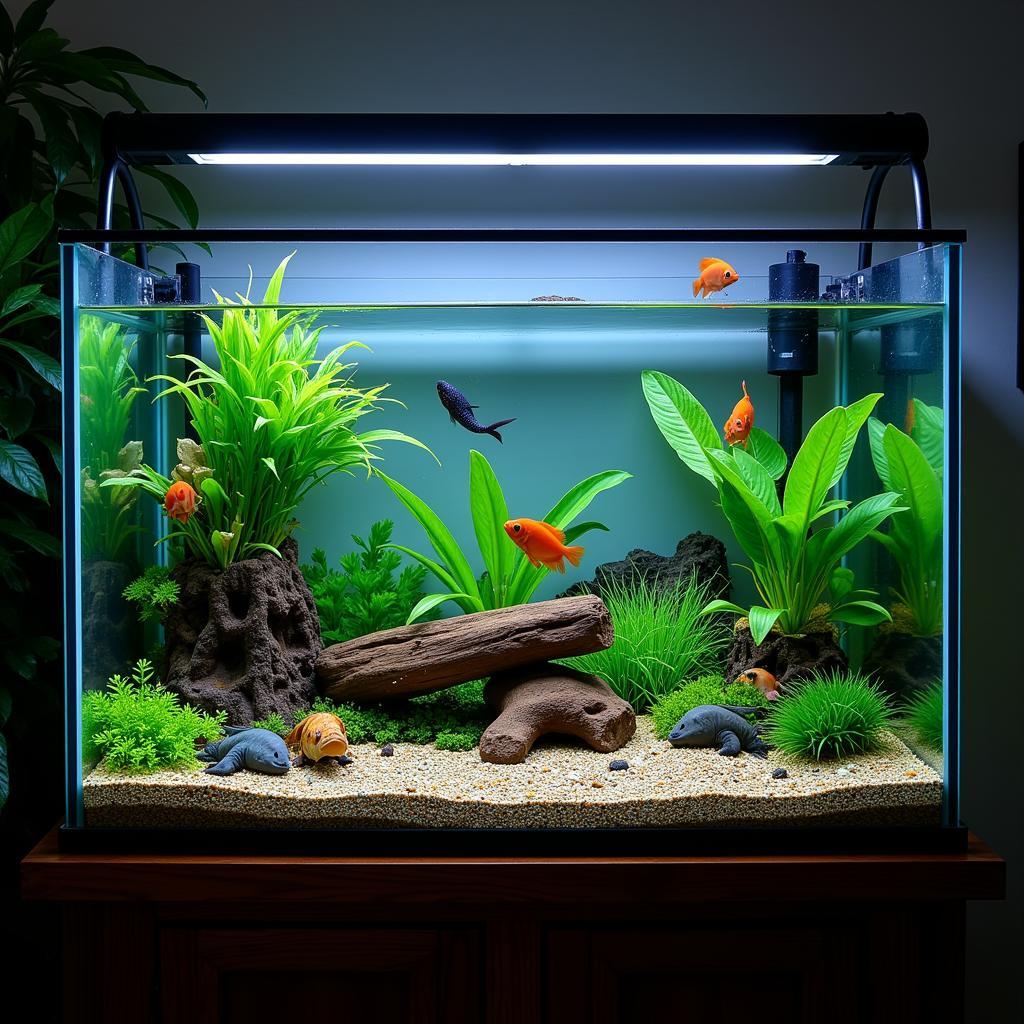African Cichlid Compatibility: A Comprehensive Guide
African cichlids are a popular choice for freshwater aquariums due to their vibrant colors and fascinating behaviors. However, creating a harmonious community tank requires careful consideration of African Cichlid Compatibility. Understanding the temperament and needs of different species is crucial for their well-being and the overall success of your aquarium.
Factors Influencing African Cichlid Compatibility
Several key factors influence whether different African cichlid species can coexist peacefully and thrive in the same tank:
- Origin: Cichlids from different African lakes have evolved unique characteristics and may not be compatible. For example, mixing Lake Malawi cichlids with Lake Tanganyika cichlids can lead to aggression and territorial disputes.
- Temperament: Some cichlid species are naturally more aggressive and territorial than others. Mbuna cichlids, for instance, are known for their boisterous nature, while peacocks are generally more peaceful.
- Size and Shape: Introducing significantly smaller cichlids with larger, more aggressive species can result in predation. Similarly, cichlids with similar body shapes may compete for food and territory.
- Water Parameters: Maintaining specific water parameters is vital for the health of African cichlids. Different species may have different requirements for pH, hardness, and temperature.
Creating a Compatible African Cichlid Community
By following these guidelines, you can increase the chances of success when combining different African cichlid species:
- Choose Cichlids from the Same Lake: Sticking to species from the same lake ensures compatibility in terms of water parameters and reduces the risk of introducing diseases.
- Research Temperament: Thoroughly research the temperament of potential tank mates. Select a mix of peaceful and semi-aggressive species to create a balanced community.
- Consider Size and Shape: Opt for cichlids with a noticeable size difference to minimize competition and aggression. Avoid combining species with similar body shapes, as this can increase territorial disputes.
- Provide Ample Space: A larger tank allows for better territory establishment and reduces the likelihood of aggression. Aim for a tank size of at least 55 gallons for a community setup.
- Aquascape Strategically: Create a visually appealing and functional environment with rocks, caves, and plants. These elements provide hiding spots and break up lines of sight, reducing stress and aggression.
Common African Cichlid Compatibility Questions
Can I mix mbuna and peacock cichlids?
While possible, mixing mbuna and peacock cichlids requires careful planning. Mbuna’s aggressive nature can stress the more peaceful peacocks. Opt for a larger tank, provide ample hiding spaces, and choose less aggressive mbuna species.
What are some good beginner African cichlids?
For beginners, consider relatively peaceful and hardy species like yellow labs, electric yellows, and African dragon fish. These cichlids adapt well to a variety of tank conditions.
How many African cichlids can I keep in my tank?
The number of cichlids you can keep depends on the tank size, species, and filtration capacity. Overcrowding can lead to aggression and poor water quality. As a general rule, allow 4-5 gallons of water per inch of adult cichlid.
Can I keep African cichlids with other types of fish?
While possible, mixing African cichlids with other fish types requires careful consideration. Avoid species that may be perceived as food or competitors.
 African Cichlids and Compatible Tank Mates
African Cichlids and Compatible Tank Mates
Conclusion
Creating a thriving African cichlid community tank hinges on understanding and addressing compatibility factors. By carefully selecting species, providing ample space, and creating a suitable environment, you can enjoy the beauty and behavior of these fascinating fish for years to come. Remember to research potential tank mates, prioritize the well-being of your cichlids, and seek expert advice if needed to ensure a harmonious and thriving aquatic environment. If you’re considering different tank sizes, take a look at our guide on African fish tank setups for inspiration.
For more information on specific African cichlid species, check out our articles on African cichlids size and African cichlids haps and peacocks for sale. Additionally, if you’re interested in exploring other compatible tank mates, you might find our guide on African knife fish with cichlids insightful.